 |
 |
 |
| |
Modulation of Tenofovir (TFV) Pharmacokinetics and Antiviral
Activity by Vaginal Microbiota: Implications for Topical PrEP
|
| |
| |
http://webcasts.hivr4p.org/console/player/33023?mediaType=slideVideo&
Ekaterina Taneva1, Scott Cameron2, Natalia Cheshenko2, Sujatha Srinivasan3, David N. Fredricks3, Betsy C. Herold1,2
1Albert Einstein College of Medicine, United States, 2Albert Einstein College of Medicine/Montefiore Medical Center, United States, 3Fred Hutchinson Cancer Research Center, United States
Background: TFV, TFV disoproxil fumarate (TDF) and TFV alafenamide (TAF) are being advanced for preexposure prophylaxis. We found that TDF and TAF are passively transported whereas TFV is taken up by endocytosis. In a subset of participants in TFV gel studies we observed little anti-HIV activity despite TFV levels exceeding the 50% inhibitory concentration (IC50) in cervicovaginal lavages and hypothesize that discordant drug levels and antiviral activity may be attributed to variable PK.
Methods: We measured radiolabeled drug transport at different pH and when cells were exposed to bacterial supernatants.
Results: TFV uptake by T cells was significantly reduced (p<0.0001) when the extracellular pH increased to 6.5-8.2: a pH range observed in bacterial vaginosis (BV) and after sex. G. vaginalis, P. bivia, and M. indolicus (BVAB3) supernatants decreased TFV uptake by 86%, 79%, and 43%, respectively, whereas A. vaginae supernatants enhanced TFV uptake by 217%. In contrast, neither pH nor bacterial supernatants had any effect on TDF or TAF uptake. The inhibitory effect of G. vaginalis supernatants was heat-stable, pH-independent, and cell type-specific: TFV levels were decreased in T cells but not cervical and vaginal epithelial cells. The inhibitory activity persisted when G. vaginalis and A. vaginae supernatants were mixed 1:1. G. vaginalis supernatants also reduced internalization of the endocytic probe transferrin.
The inhibitory activity mapped to small molecule(s) (< 3 kD) further purified by HPLC fractionation. The inhibitory effects of G. vaginalis supernatants resulted in lower anti-HIV activity in vitro at 1-10 μM TFV.
Conclusions: TFV internalization by T cells may be impacted by local pH and vaginal microbiota, which could contribute to variable drug efficacy in subpopulations including adolescents or BV. The observations that uptake of the prodrugs was not altered by pH or microbiota coupled with their over 100-fold lower IC50 suggest that these may provide greater and more consistent protection.


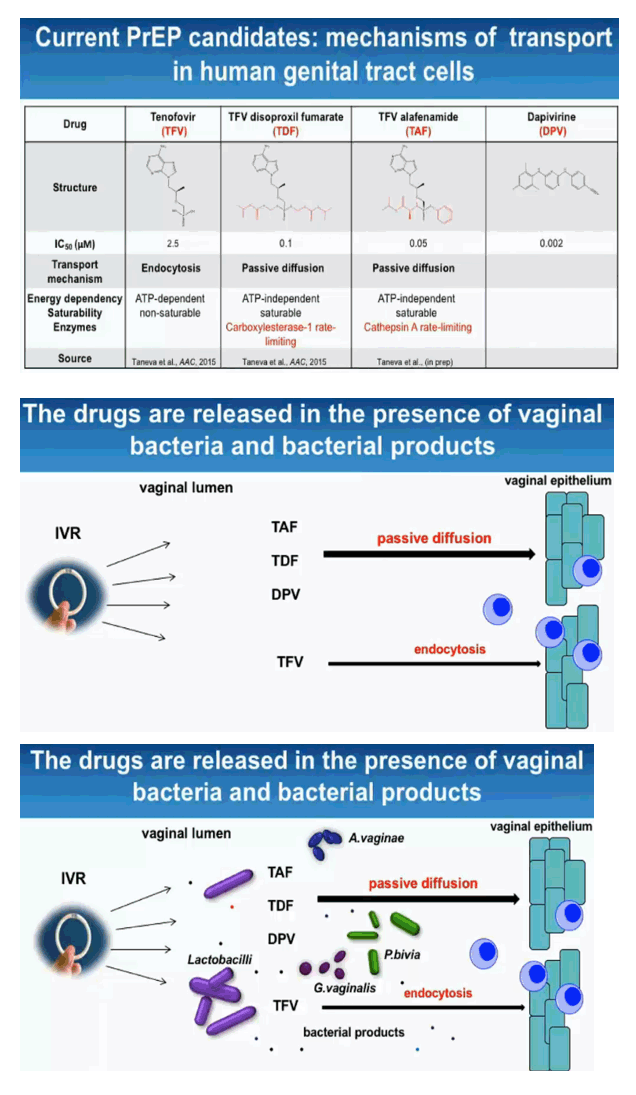
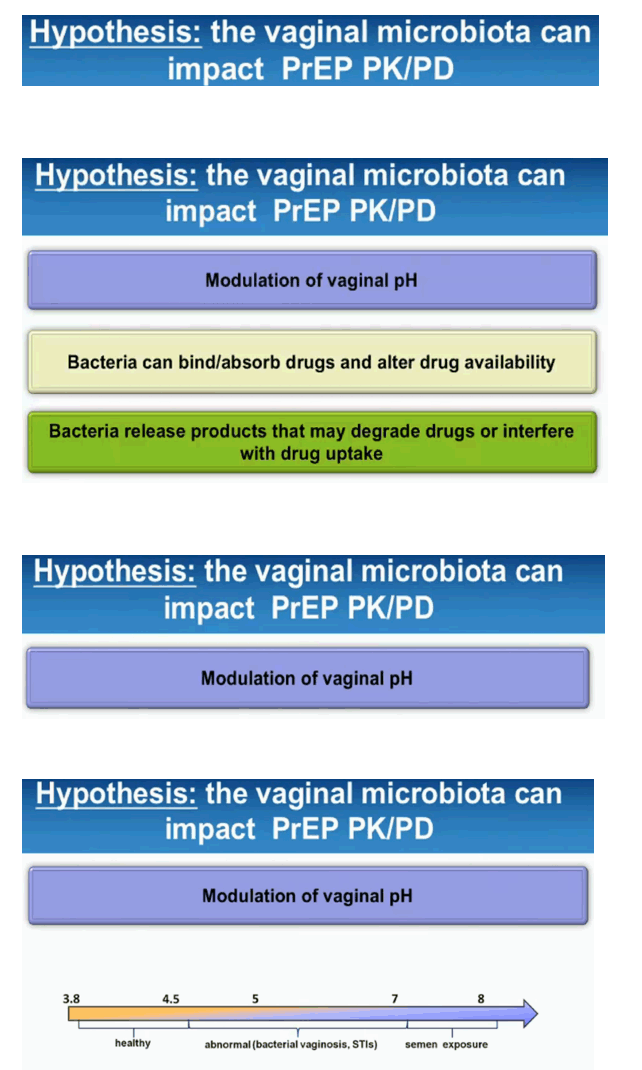
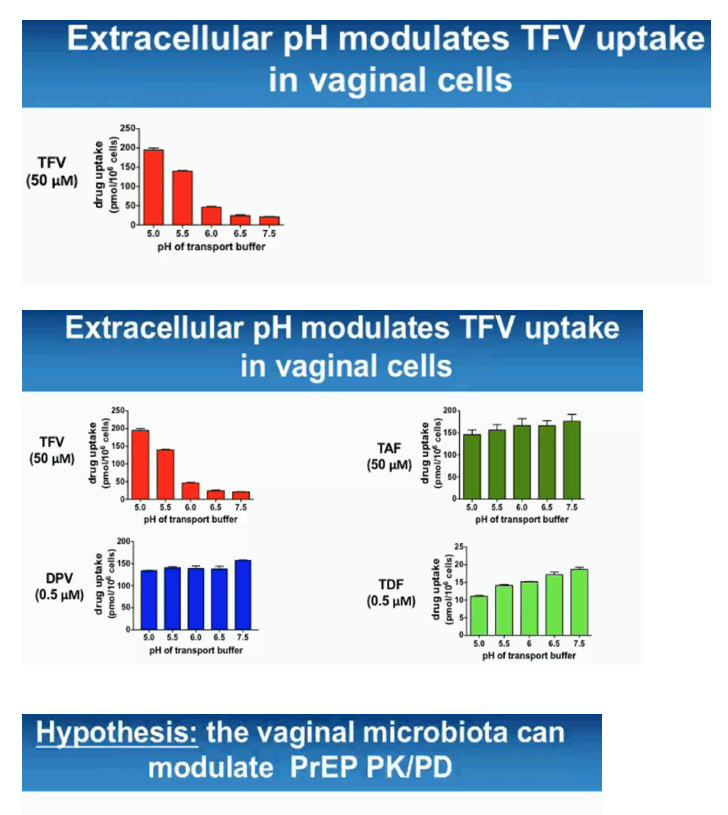
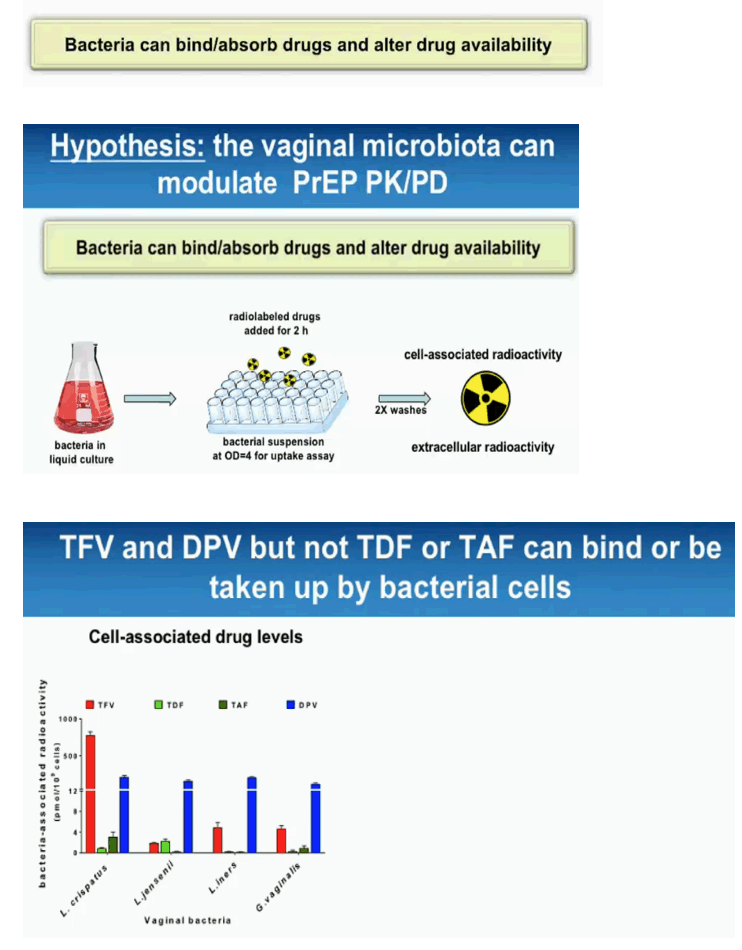
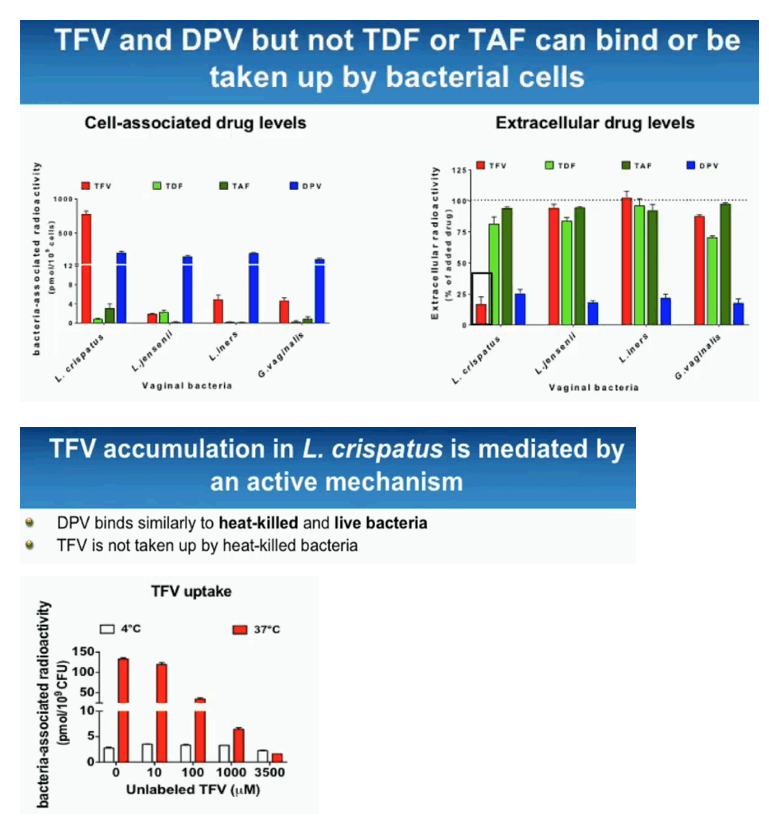
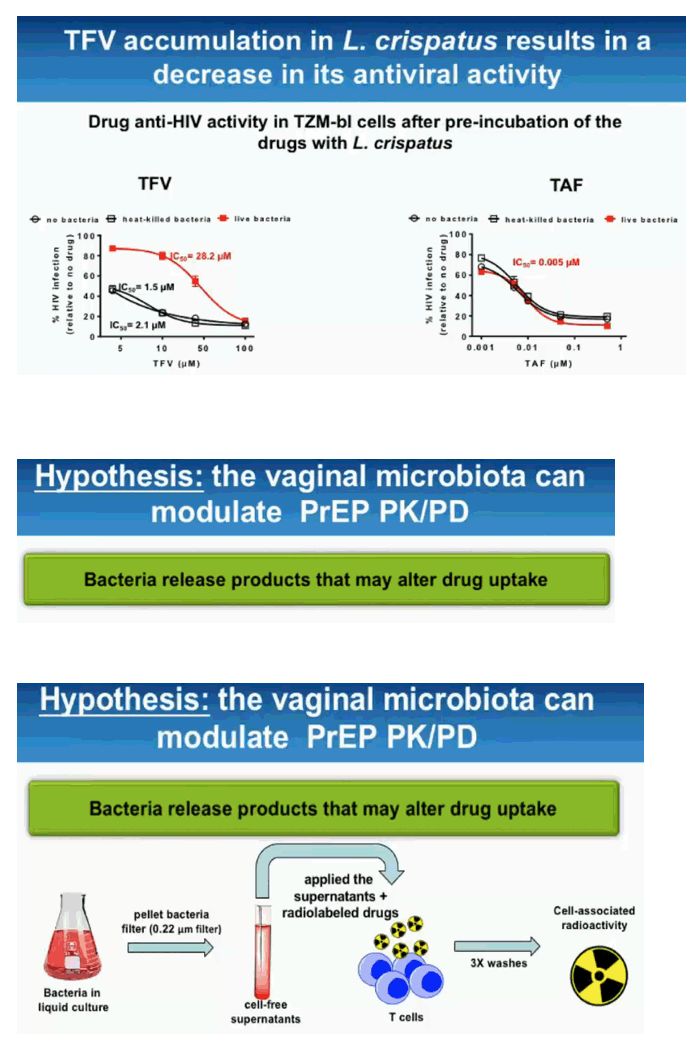
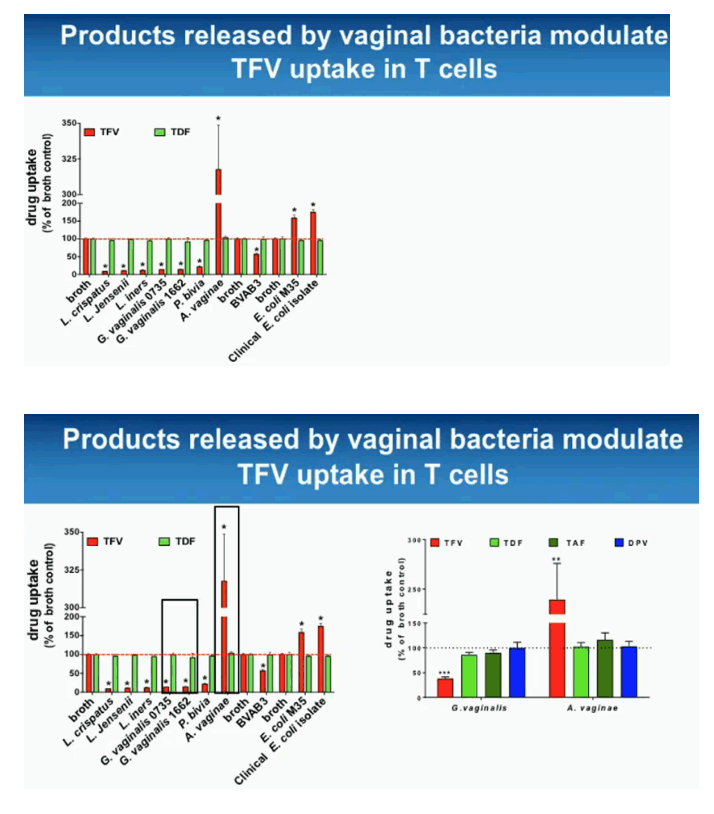
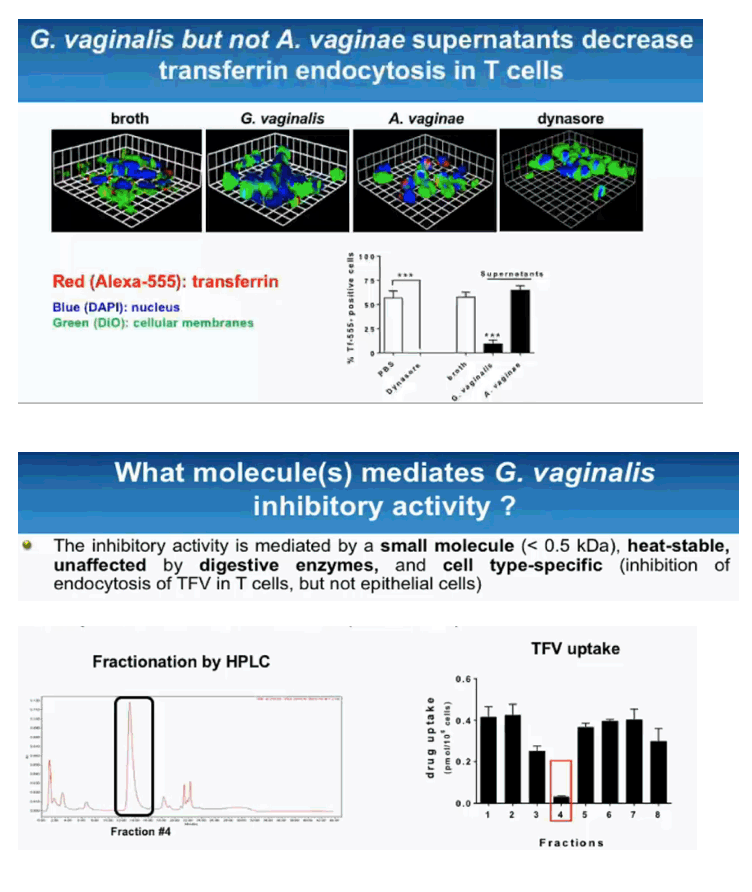
|
| |
|
 |
 |
|
|